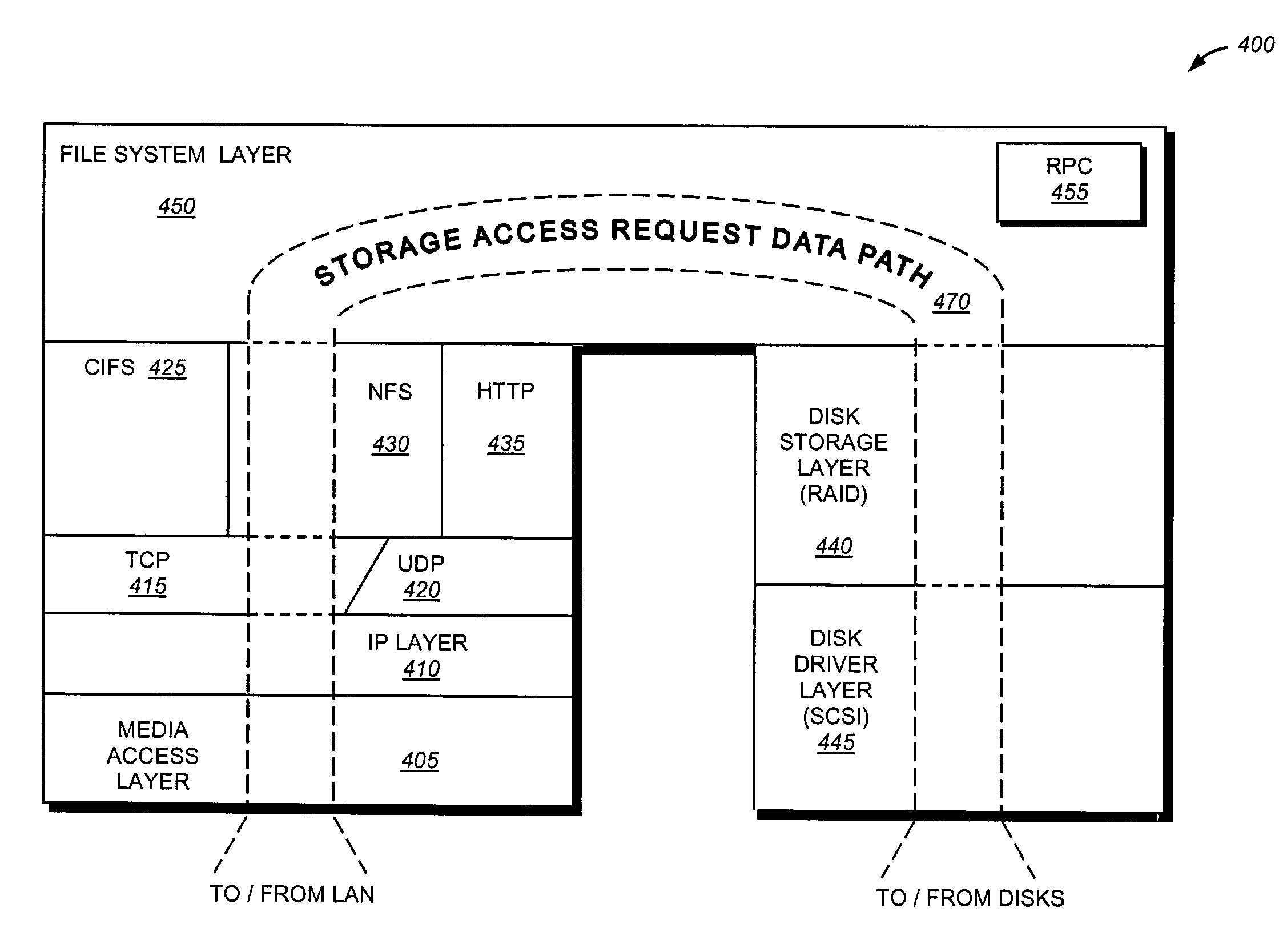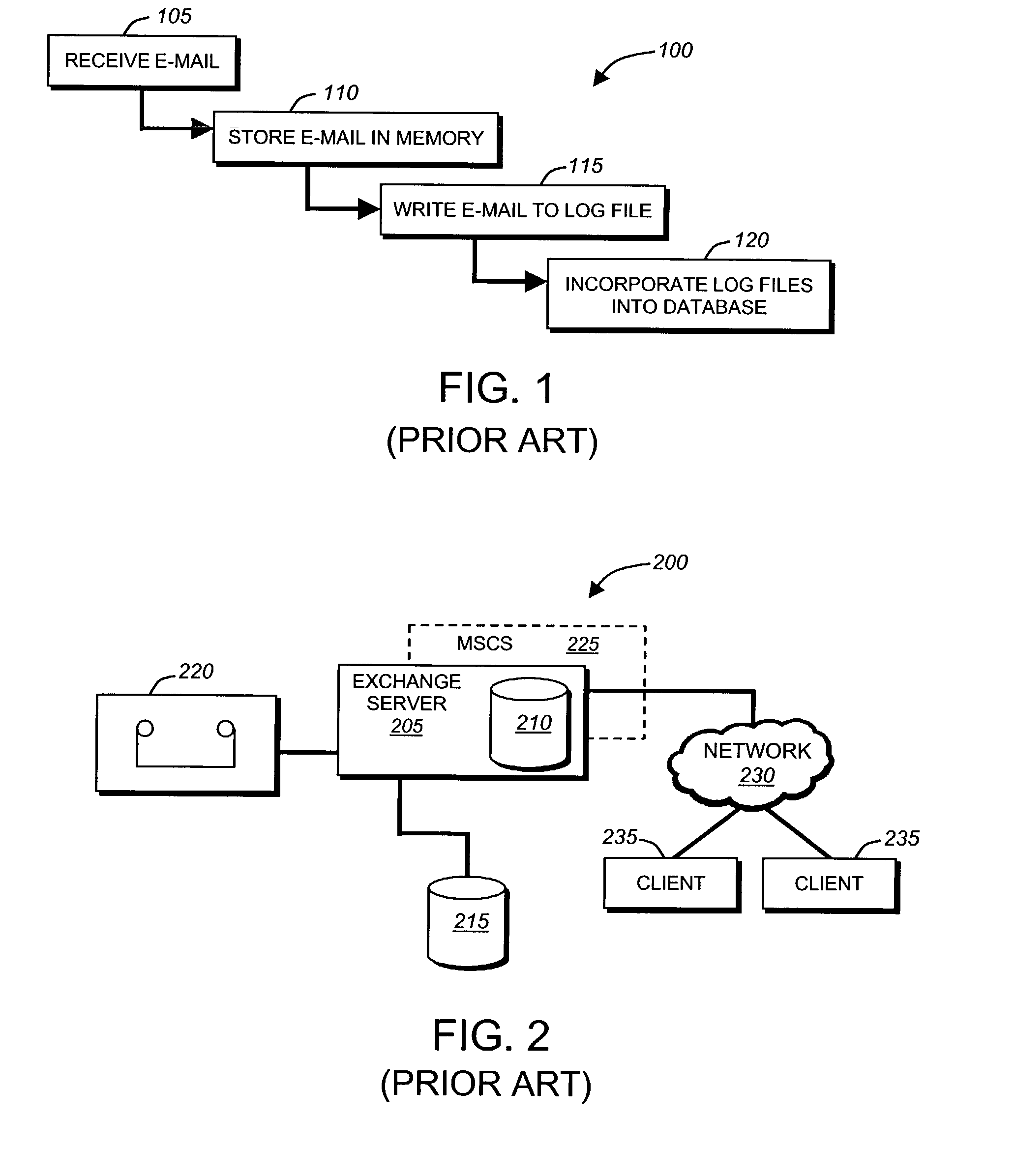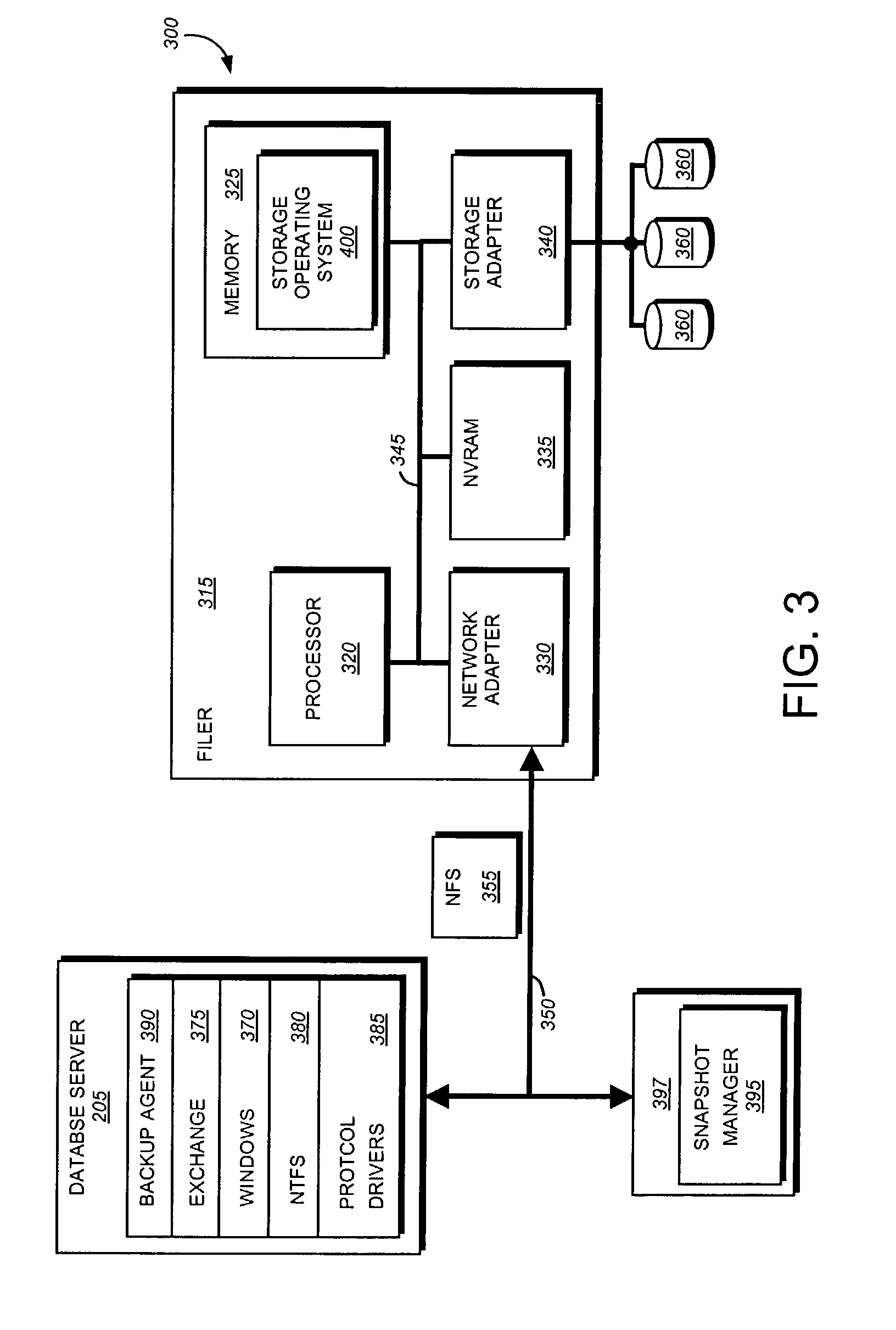System and method for file system snapshot of a virtual logical disk
- Summary
- Abstract
- Description
- Claims
- Application Information
AI Technical Summary
Benefits of technology
Problems solved by technology
Method used
Image
Examples
Embodiment Construction
[0025]A. Network Environment
[0026]FIG. 3 is a schematic block diagram of a storage system environment 300, including a database server 205 interconnected with a file server 315 over a network that may be advantageously used with the present invention. The file server or “filer”315 is a computer that provides file service relating to the organization of information on storage devices, such as disks 360. It will be understood to those skilled in the art that the inventive technique described herein may apply to any type of special-purpose computer (e.g., server) or general-purpose computer, including a standalone computer. The filer 315 comprises a processor 320, a memory 325, a network adapter 330 and a storage adapter 340 interconnected by a system bus 345. Executing within the memory 325 of the filer is a storage operating system 400 (FIG. 4) that implements a file system to logically organize the information as a hierarchical structure of directories and files on the disks.
[0027]I...
PUM
 Login to View More
Login to View More Abstract
Description
Claims
Application Information
 Login to View More
Login to View More - R&D
- Intellectual Property
- Life Sciences
- Materials
- Tech Scout
- Unparalleled Data Quality
- Higher Quality Content
- 60% Fewer Hallucinations
Browse by: Latest US Patents, China's latest patents, Technical Efficacy Thesaurus, Application Domain, Technology Topic, Popular Technical Reports.
© 2025 PatSnap. All rights reserved.Legal|Privacy policy|Modern Slavery Act Transparency Statement|Sitemap|About US| Contact US: help@patsnap.com



